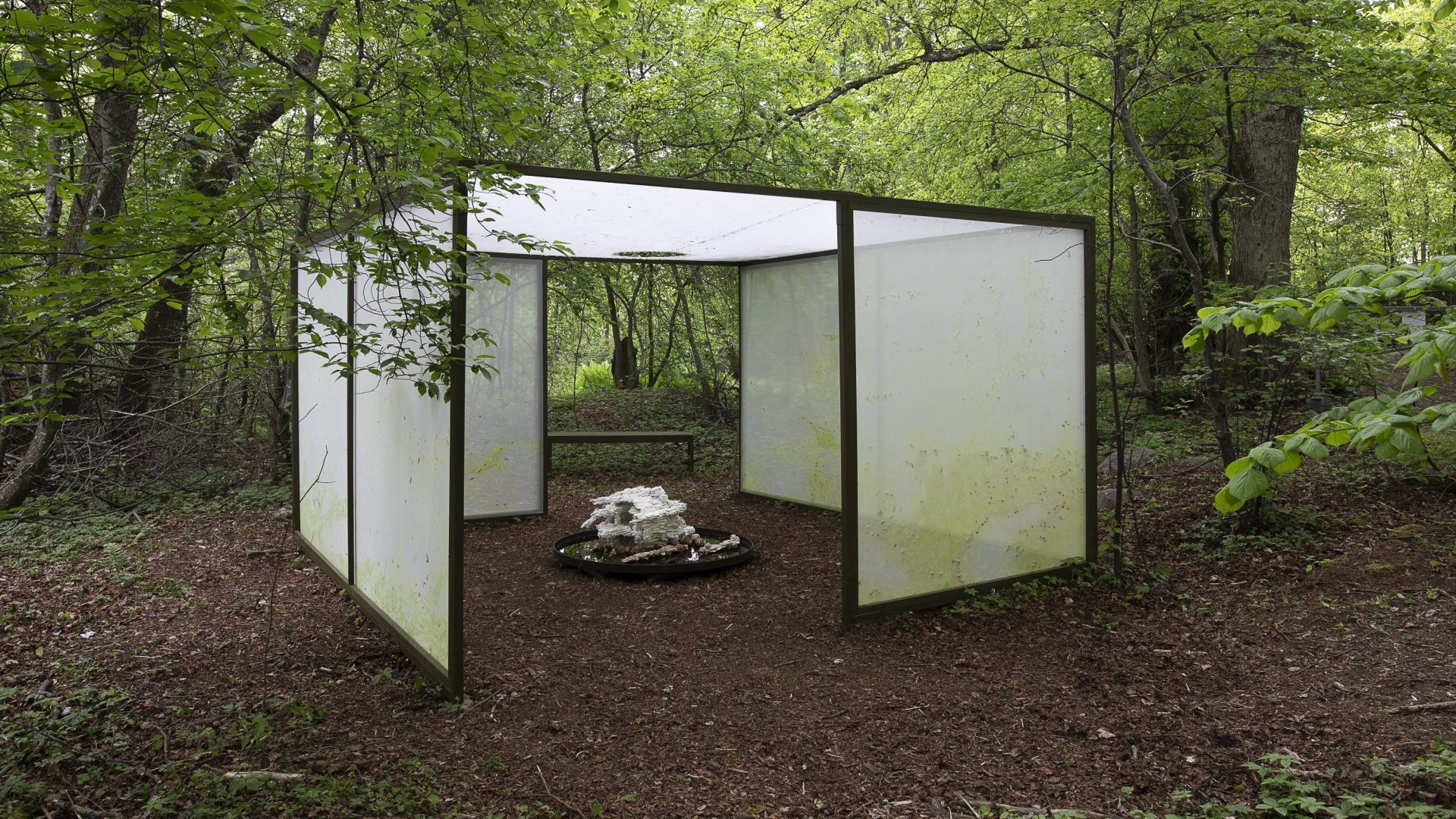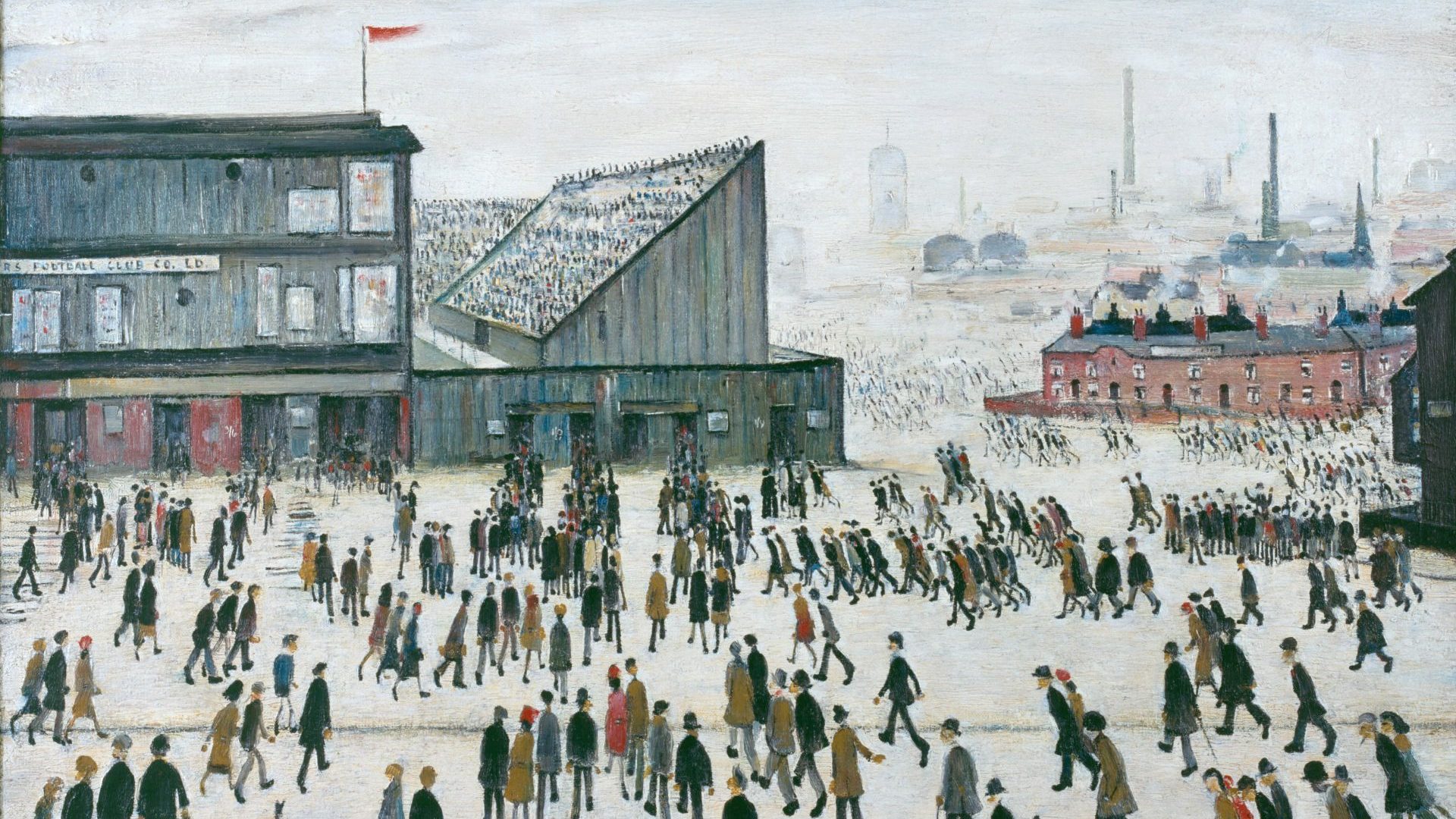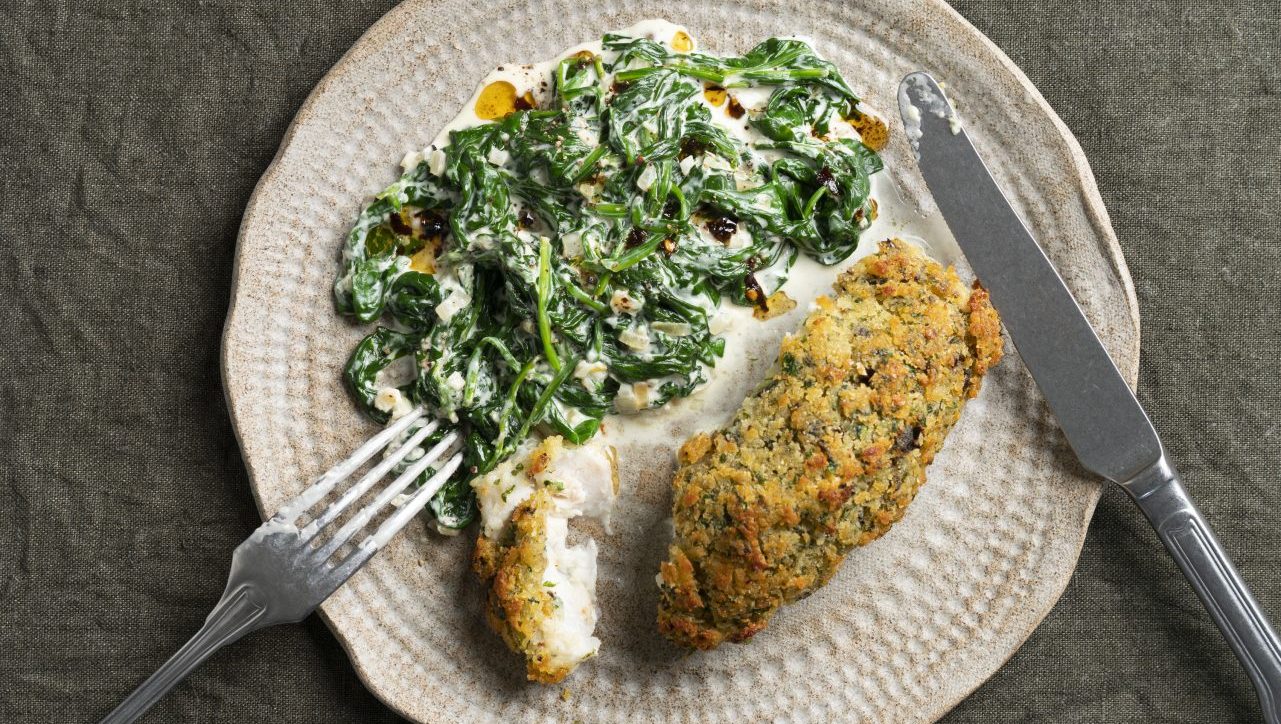In the freezing winter of 1808, Russian soldiers invaded Finland. To ensure control of his new possession, Tsar Alexander I had a hulking fortress built on the island of Vallisaari, a rocky outpost in the Helsinki archipelago.
The ruins of the fortifications remain but the troops left another, unexpected, legacy; the Turkish warty-cabbage. This improbably named flower, a native of the Caucasus, was carried as seeds on the boots of the invaders and today brightens the island in a showy blaze of yellow.
Well, it’s a good story and one that chimes well with the ethos of the second Helsinki Biennial New Directions May Emerge, which concentrates on the threat of environmental damage – the Baltic is one of the most polluted seas in the world, thanks to overfishing, the dumping of pharmaceuticals and plastics – and the political, social and technological consequences of those challenges.
Just as the Turkish warty-cabbage proves that something benign can be born out of adversity, the works in the biennial attempt not just to highlight problems but also to find solutions.
The island is the ideal venue to engage in this debate. The love of the countryside with its lakes, forests and empty spaces, is firmly embedded in the psyche of the people, and as Timo Huusko, chief curator of the Ateneum Art Museum (more of that fine institution later), avers: “If the Finnish people have adopted the landscape, we can also say that the landscape has adopted the Finnish people… the character of a people is formed by the surrounding landscape and climate.”
It was from the island’s landscape that the head curator, Joasia Krysa, encouraged the artists to take their inspiration, and the contributors have taken advantage of its dense woods, granite rocks and marshy ponds, with sculptures lurking in the branches of trees, tucked away in the undergrowth and staged in the abandoned military buildings. And because this is 2023, there is a smattering of online projects such as the digital timber raft in Green Gold, which deconstructs the challenges of the forestry industry.
Half of the works are new commissions, and of the 29 contributors, about one-third are Finnish and Sámi artists such as Tuula Närhinen, who addresses the murk and mess that despoils the sea near her Helsinki home. A striking array of rubbish taken from the waters stretches along one wall of a darkened chamber, in a deceptively pretty array of colours. She has a similar display in the Helsinki Art Museum (HAM), which is also part of the biennial, in which she has collected debris from the banks of the River Thames.
Emilija Škarnulytė has taken over a former gunpowder magazine for her film Hypoxia, which combines myth and fantasy as an imaginary spacecraft lying on the bottom of the Baltic Sea, which uncovers evidence that hypoxia, the man-made phenomenon of oxygen depletion in the ocean, is helping to destroy the sea’s ecological balance.
Two offerings highlight the threats to the Sámi reindeer-herder communities. Matti Aikio’s video focuses on the relationship between humans and reindeer to highlight the loss of indigenous identity endured by the Sámi, and their eagerness for greater autonomy from central government. More clinically, Interprt, a group that specialises in environmental justice, employs videos, maps and interviews to focus on a legal struggle by herders who are desperate to preserve a reindeer migration route threatened by wind power projects.
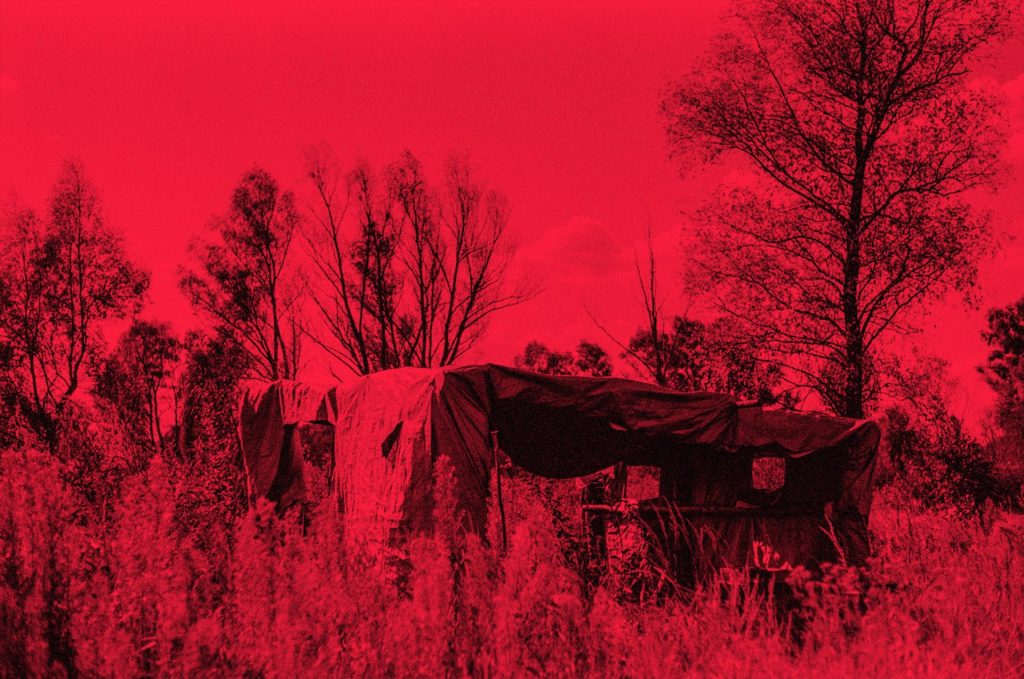
In startling contrast is an array of water pots by the Spanish artist and researcher Asunción Molinos Gordo. Startling because the pots, precariously balanced on plinths made from various water holders, leap out of the darkness of a military shed. Cuánto río allá arriba! (How Many Rivers Above!) celebrates the ancient methods of farmers who work together to maximise their resources.
Under the arched ceiling of the chamber next door, Songs to Earth, Songs to Seeds by Sepideh Rahaa is an elegiac portrayal of rice cultivation in Iran, from planting to growing to picking. The camera lingers on hands holding, almost caressing, the harvested rice.
In Remedies, Sasha Huber and Petri Saarikko have conjured up an eerie mist floating off the surface of a pond that was excavated to serve as a freshwater well during the Russian occupation. It is a pleasant place to pause, but the mist signals danger. The pond has suffered from contamination and, however inviting it looks, swimming is banned because of the weapons that lie dormant in it.
A very direct response to the biennial’s mission is a group of raised flower beds filled with phosphorous created by Mohamed Sleiman Labat, whose Algerian homeland is blighted with phosphate mining, and Pekka Niskanen from Helsinki. It demonstrates that however inimical the conditions, it is possible, as Algerian farmers have discovered, to grow herbs and vegetables such as basil, carrots, kale and lettuce.
As a piece of art, it may not be one to linger over – as a documentary, as a statement, it’s thought-provoking.
What the works have is a sense of place and of identity – so important to a country where, until the early half of the 19th century, the art scene was virtually non-existent, stifled by centuries of Swedish rule, inhibited by Russian occupation until 1917.
Even then, Finland was troubled by political turmoil and another invasion in 1939 by the Soviets. The years of the cold war saw the country stay neutral but always looking over its shoulder at the Soviet Union. Now Finland is a member of Nato, though eager to preserve its independent spirit.
Mari Männistö, cultural director for Helsinki, says: “When it comes to culture, we had very, very different neighbours. To be in this special position between west and east is something which probably is somewhere deep in our understanding in terms of creativity. We are influenced by the Slavic storytelling that is a bit melancholic and mythological, while also on the other hand we lean a lot to the west. Now I think we solidly stand on our own feet when it comes to art.”
A sign of growing confidence was signalled in 2012 when Helsinki rejected the opportunity to design and become home to a new Guggenheim museum. It would have been worth $138m (£108m) in prize money and possibly more in prestige, but the authorities reckoned they could do a better job promoting their own culture without the Guggenheim branding.
They were right to follow their instincts. Whether as a direct result or not, Finnish culture – music, dance and visual arts – is burgeoning.
If visitors go no further than the Ateneum they will understand something of the country’s social and cultural history. Built in 1887, it has just reopened with a re-hang based on themes including nature, with reassuring landscapes and finely drafted still-lives of birds and animals by the meticulous Ferdinand von Wright (1822-1906).
The hard slog endured by the poor is portrayed in Helene Schjerfbeck’s The Convalescent (1888) and Marcus Collins’ Mine workers in Quarry (1926) – a contrast to the languorous splendour of Odalisque (1883) by Richard Hall and the sly-eyed subject of In the rocking chair, Anni Bremer (1908) by Hugo Simberg.
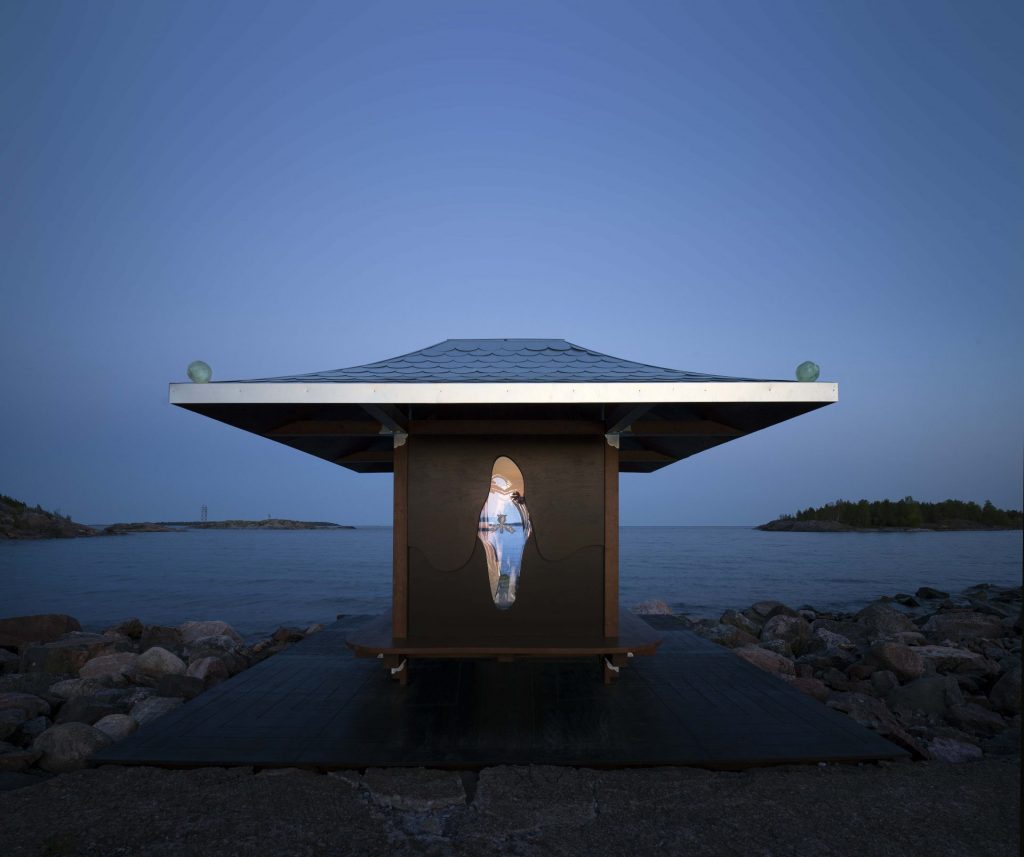
In the realm of myths and mystery, few works are more extraordinary than Akseli Gallen-Kallela’s melodramatic triptych the Aino Myth, which depicts an unclad maiden escaping the attentions of a libidinous sage. The painting was inspired by Finland’s epic poem Kalevala, published in 1835, which was considered to be the genesis of the National Romantic movement and has had a significant influence on the evolution of Finnish identity.
As a bonus, the country’s best-known artist, Albert Edelfelt, is the subject of an exhibition at the gallery until September 17, and his work, heavily influenced by the impressionist movement, is in its own way a fine representation of Helsinki society in the late 1800s.
The works displayed at the Ateneum end in 1970. After that the Kiasma Gallery, with its swooping curves and wide open spaces, takes over as custodian of contemporary art. Currently it is starring Tom of Finland, by Touko Laaksonen, a gay artist of the 1970s who celebrated his untrammelled lifestyle with a series of cartoony sketches of gay sex – all moustaches, leather and prodigious appendages.
More rewarding, and frankly more proficient, is the annual exhibition for young people aged between 15 and 23 in nearby Amos Rex, a converted 1930s cinema. Questions of identity abound, as one might expect, but not in any self-indulgent way. A mood of optimism rather than teenage angst prevails, maybe because the call for entries went out as Covid-19 was fading and the would-be entrants were emerging from those dark days with a feeling of relief and positivity.
The show is, in part, a tribute to the Finnish education system, which encourages an awareness of music, dance and art, and arranges for children and their families to go to arts events twice a year for seven years. They could be the talents of the future, showing at local galleries such as Helsinki Contemporary and the smart Forsblom gallery or the Espoo Museum of Modern Art, which is reached by a quick flit on the immaculate metro.
Big, airy galleries in what was a printing house show many Finnish artists as well as international contributors, plus the fabulous ceramic and glass from the collection of Kyösti Kakkonen as well as the primary colours and bold shapes of furniture designed by Yrjö Kukkapuro.
Männistö says: “I think it’s a question of being in a sense a young nation, being a country which is trying to map a route so that very often we think being international is something that is very highly valued. The pressure from the art world for instance is very often this: you must be international, have the big names.
“I think that the mixture of both is actually something that works for Helsinki. But I think it’s also a good sign that you have the guts to show your own art.”
The Helsinki Biennial, New Directions May Emerge, runs in various locations until September 17


